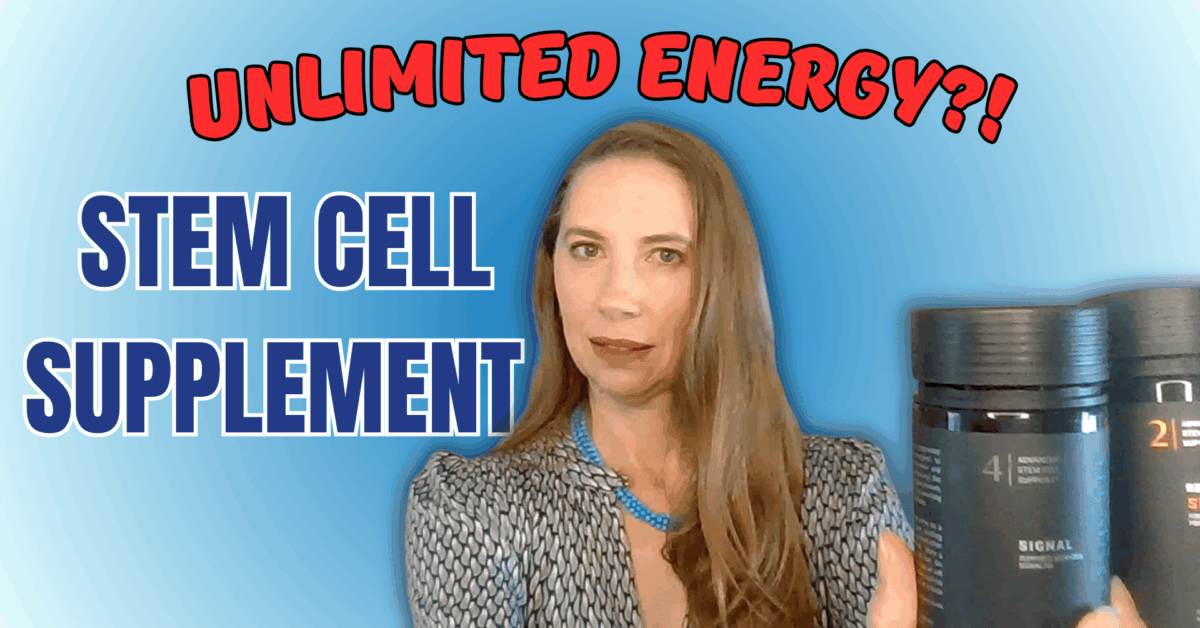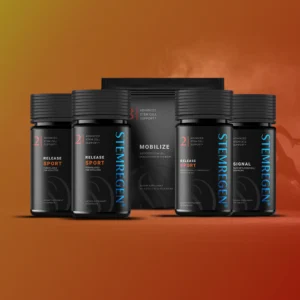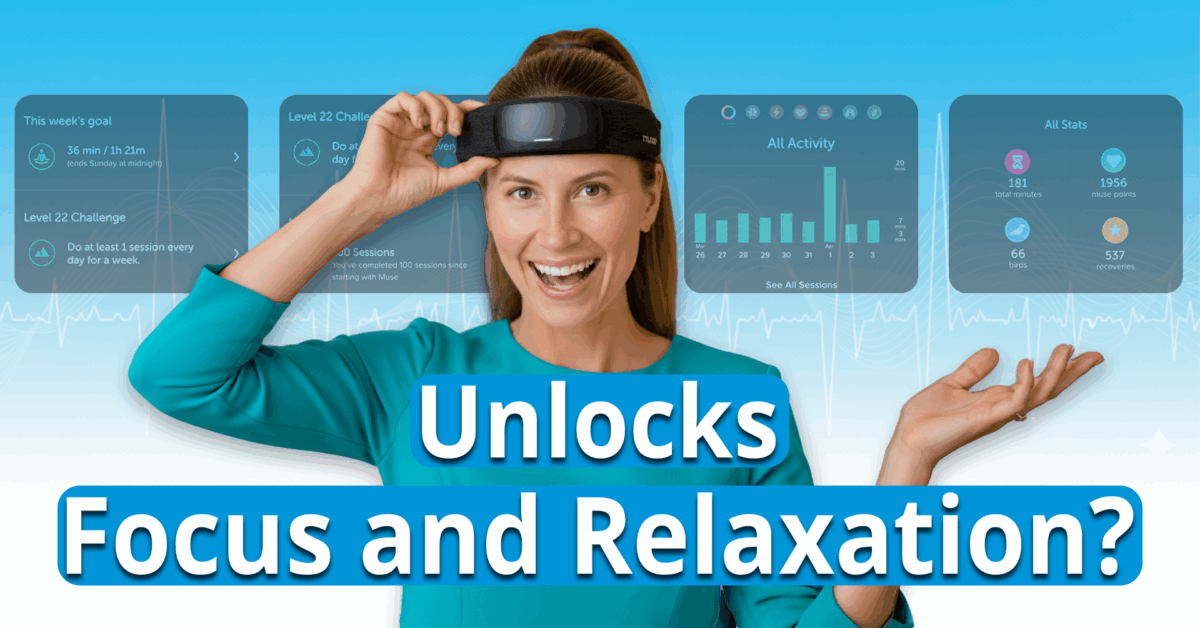Who wants to know about stem cells?
A parent on our Navigating Awetism platform recently asked me to review a supplement called StemRegen. She was considering a stem cell transplant for her daughter. And on our platform, we focus on strategy. That means really digging into the root causes of symptoms and then mapping out possible solutions in a very structured way. So when she asked me to review StemRegen, I said, “Sure, why not? I certainly will do so.” I’ll test it on myself, and I’ll share my honest experience with her and then with you.
Going in sceptical
To be clear, I went into this very neutral. Stem cells are a hot topic in autism. I’ve heard different results, let’s put it that way. But I was curious about this product, and I was hopeful, definitely. I always wanted to test good things, but I was definitely skeptical. I didn’t do a ton of research ahead of time because I really wanted to feel the effects firsthand without expectations or opinions or somehow limiting beliefs. So the whole idea was to try this.
I did reach out to the company and asked them to send me a month’s supply. They did so. So this is not a sponsored post, but I didn’t buy the product. I asked them to give it to me.
Perfect timing
The timing was perfect for this parent to ask me because in the summer, I trained for a 1.2-mile charity swim across the lake. And this is my second year of doing it.
Let’s be honest, I trained intensely because I do not want to drown in the middle of the lake. It’s a very big lake. It is a very deep lake. Yes, there are people around you, and there’s a lot of safety stuff. But my motivation is that I actually need to train like an athlete would train to make that 1.2 miles. And I actually train for 1.5 or a little bit more, so that I know I can do more than what is on the actual day.
Accelerated Recovery Support
When I looked at StemRegen’s products and protocols, their Accelerated Recovery Support protocol really aligned with this activity that I was doing. Athletes use this during intense training and for recovery. And I figured this is really the ideal way to test it because I’m actually training like an athlete. I am definitely not an athlete. But the intensity of the training was that of an athlete. So I wanted to test it in a reasonable way.
Let me explain the products because there are three in this protocol. It is expensive
Product 1: Release Sport
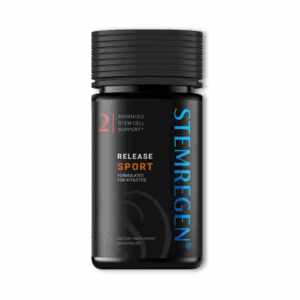
This is the StemRegen Release Sport. This boosts stem cell release and migration. You’re supposed to take two capsules three times a day in the Accelerated Recovery Support. So again, this is for athletes who are really training. It’s a regular-sized capsule.
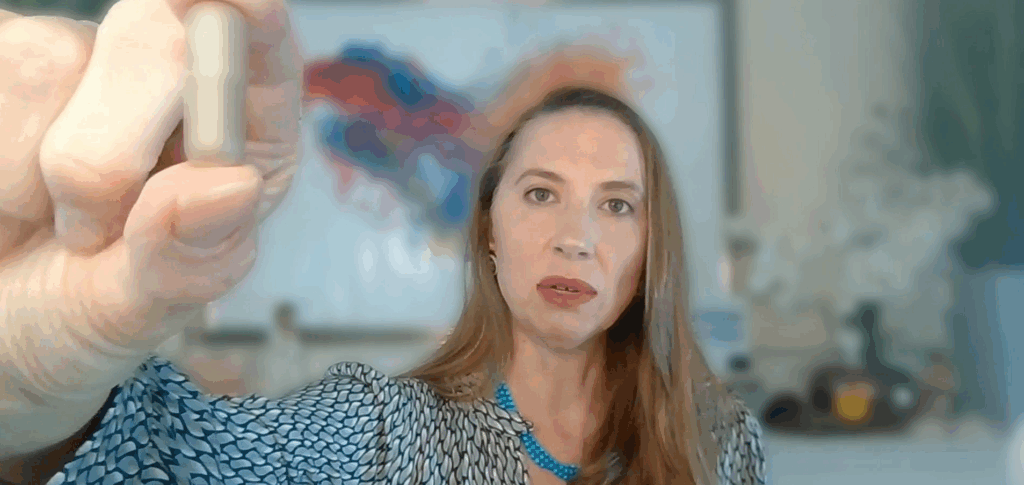
Capsule taste
I haven’t broken it apart to see… Actually, that’s interesting. Let me break it apart and see what it tastes like. There’s a little bit in my hand. It actually doesn’t taste terrible. There’s a little bit of an aftertaste, but in case parents are starting to think about this for their child, they might be like, “What does that taste like?” It’s definitely manageable. You could work with that. You take two of these at full dose. That’s the StemRegen Release Sport.
Product 2: Signal
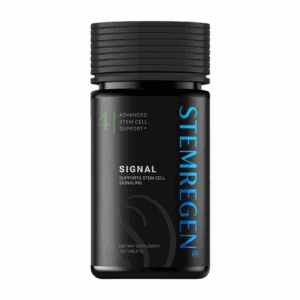
This is meant to reduce systemic inflammation. And this is what they consider noise: systemic inflammation. They consider that noise because they want the stem cells to go to the area in the body that is new and needs repairing. Because this is for athletes. So they’re training and they’re putting stress on their different muscles. They’re causing inflammation in the sense of training. And then they want the stem cells to go to that area that was recently stressed. So they’re trying to reduce the systemic inflammation so the stem cells don’t go elsewhere in the body, and they focus on this new area.
For a child with autism, those systemic areas of inflammation are actually what we as parents are interested in. But with athletes and the protocol I was using, they wanted to reduce this overall systemic inflammation, so the stem cells are directed to the new areas of inflammation and repair.
Let me show you what one of these looks like. This is a tablet. It’s a reasonable size. If you swallow pills, it’s not a problem. I would take two of these when I was up at full dose.
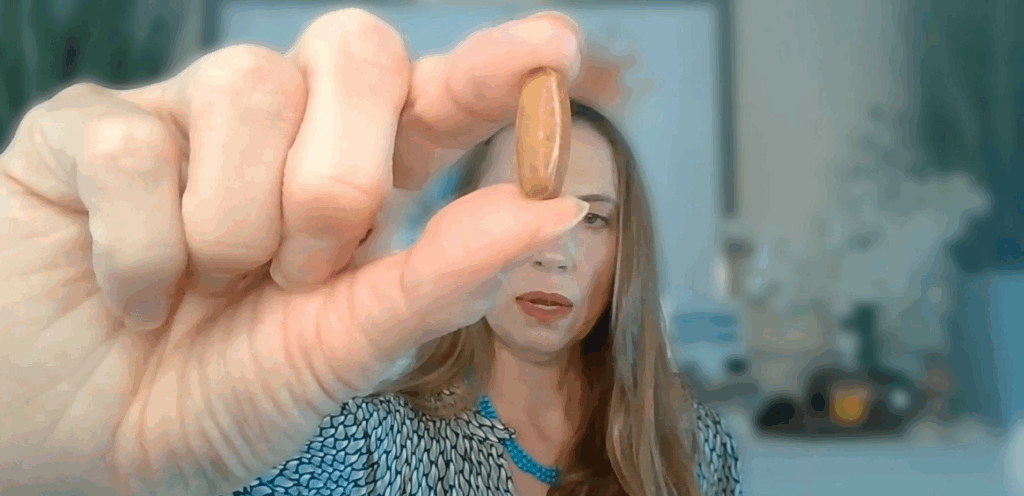
Product 3: Mobilize
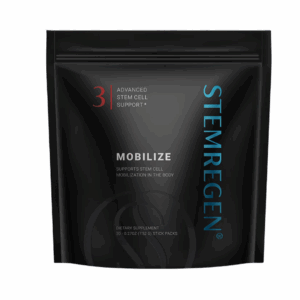
This is used to help the stem cells navigate throughout the body. So it optimizes blood flow for efficient stem cell delivery to the actual tissues. It’s a powder.
I have maybe 10-ish ounces of water here. And I’ll show you what it looks like.
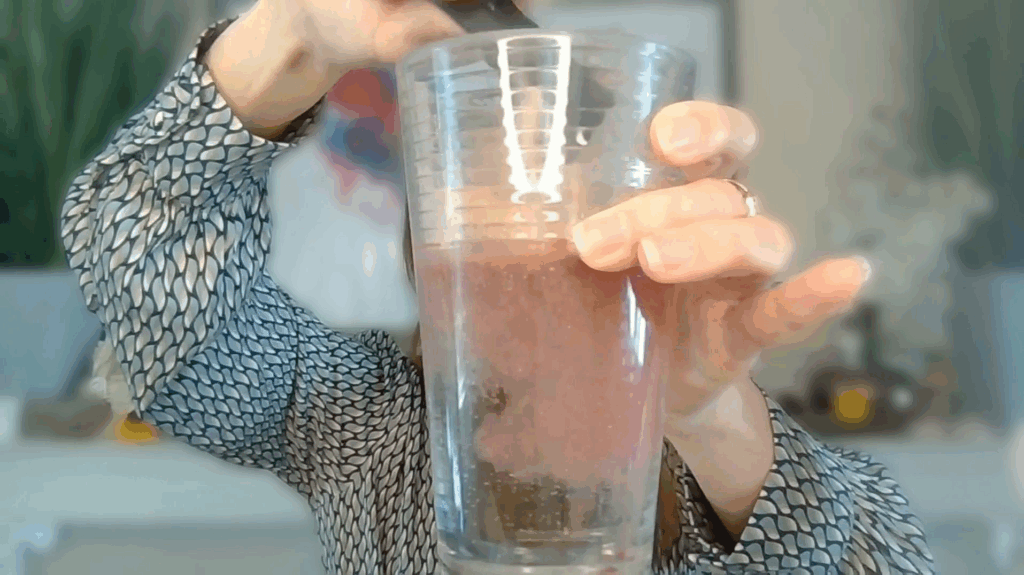
They say to drink this on an empty stomach. It smells good. A little fruit punchy, a little like maybe some type of berry. You can see the color. Obviously, it changes the water to this pinkish color.
Taste
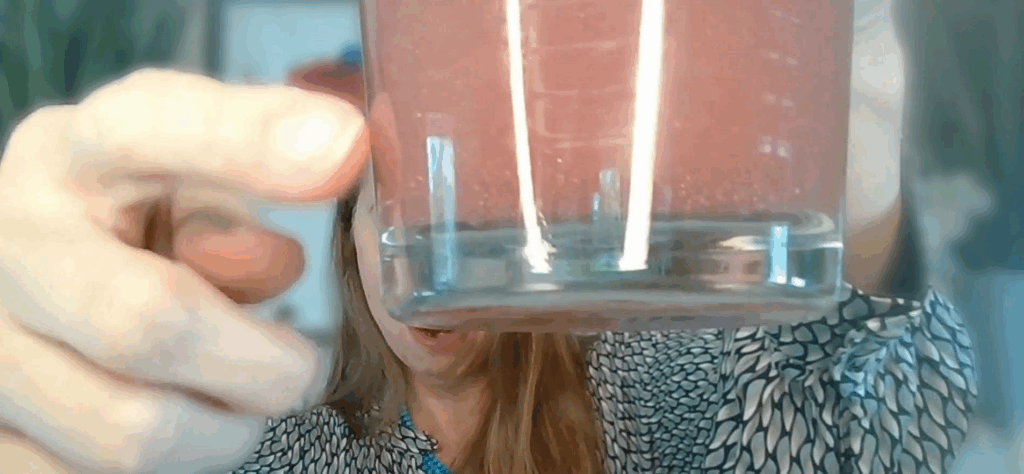
It’s a totally fine taste. I took this for a month. As you get down towards the bottom, I don’t know if you can see, but there are some different particles flying around. Not everything gets dissolved. The flavor changes a little bit as you go down, but it’s a good flavor. I haven’t had this in a few weeks. It’s totally doable. That is meant to mobilize, so as to help the stem cells navigate throughout the body.
Why three products?
Why do I need three things? These are stem cells. Why is there not just one product? So it really took me time to understand the steps of this protocol. And I only did that after I was taking it. I didn’t want to cloud my judgment and all that stuff.
But so if you want to think of this protocol, right?
- Step number one is decreasing your overall inflammation as much as possible.
- Step number two is increasing the release of your body’s own stem cells.
- And three is to support the circulatory system, so these cells can go where they’re needed most recently.
That’s the whole idea, is get them into the body, decrease the overall information so they get to that new source.
Again, this is for athletes. For a child with autism, our focus might be a little different.
Ingredients
Now, the ingredients that are used are not the common ones that we see a lot, which I’ve got to say was really interesting to me. Obviously, I’m going to look at the label and just do a quick analysis of what this stuff is.
For Signal, the product that’s used to decrease systemic inflammation, there are some really interesting products in here that aren’t your typical ones. So the ingredients are different, which is nice. And I’ve got to say this is not just the same old ingredient with an expensive label on it.
Effects
Alright, let’s get into week by week, how things changed with me, and what really happened.
Week one
I started slowly. Any autism parent knows, start slow. I didn’t start at the full dose of the protocol, and I honestly didn’t feel that much, obviously, because I wasn’t at the full dosage. But my stomach did get a little upset.
So instead of just pushing through it, I gradually eased into it because I really wanted to experience this. And I know for myself, sometimes just going too much, too fast, is not a good thing, right? So, autism parents, we are very familiar with titrating to full dose. So that is exactly what I did. I had a little stomach upset, but I stayed steady and then was able to increase.
Week two
So week two, I was at full dose, and that’s when I started noticing something shifting. It was really interesting.
I felt lighter, even happier. So my training sessions were going really well, and I had this sense of energy and positivity that was really new for me. It just flowed.
Overall, I’m a positive person, and I make sure I do appreciations and gratitudes. But a lot of times I have to make myself do that. I have to remember. It’s a conscious thing. In week two, I felt not too much difference in my body, but a difference more in positivity in my mind, which was subtle, but it was noticeable to me.
Week three
That’s when I noticed the big shift. So week three was when the results really surprised me.
Normally, when I train, my back aches if my head isn’t positioned perfectly in the water. Perfectly means you’re looking down. When you’re looking up while swimming, you’re putting a lot more stress, like there’s a different angle on your back, and I can feel it. Now, I should probably tell you that I have a fear of swimming in lakes and oceans, in nature. So my head is hardly ever looking down because I’m in full-on panic mode. I even get scared of the seaweed when it touches me. Sometimes it would just drape around my head or get in my mouth, and it’s just, oh, my goodness.
So, my head, I’ll be honest with you, it’s virtually never in that perfectly aligned position just because I’m getting scared. I know there are no sharks in the lake. But when I’m swimming, my brain goes to a different place. We can talk about that. But my brain will go to a different place, and I’ll get scared.
So my back should be hurting because I was doing one-and-a-half-mile practices, two to three times a week. I wasn’t sore, and it wasn’t because my technique was changing. I know that. But my body had no complaints whatsoever. I would do these training sessions, and I’d be like, okay. Actually, my fears were starting to come down a little bit. It was really interesting.
One day
Let me give you an example of one day. What does this energy change mean? So one day I did a two-hour swim, and then I did a two-mile walk, and then I was like, I still feel like I have energy. Let’s see how far this goes. What else could I do?
I spent two hours with a pickaxe, breaking up this hard dirt that I had because I wanted to start a rose garden. And I had never before wanted to go swing a pickax and break all that up. But I did, and I had the energy, and I spent two hours doing it. That’s a lot in an entire day. That was also in addition to working.
So it was unbelievable how my body had no limits to, Oh, I’m tired. Your body says those things, and then your mind says, Oh, let’s not. You’ve done enough today. So it was amazing.
But here’s the crazy part. The next day, I wasn’t sore at all. I was expecting to wake up like, Oh, I can’t move. That’s a lot of activity. I wasn’t. I wasn’t sore at all. And then the second day, I thought, Okay, I’ve got to pay for that somehow. No, I wasn’t sore at all. I was just ready to go. I was doing another swim. And on the third day, that’s when I felt some soreness, but it actually felt like the soreness I would have had if I had the first day or, second day. It was like third-day soreness, but I skipped day one and day two. Now, I asked the company about that, and they told me, yes, delayed soreness is something they’ve seen before. And I’ve got to say that really intrigued me. I was like, How did that happen?
So by the end of the month, I’ve got to say I didn’t want that month’s supply to end. I thought, “This is really remarkable.” It’s not really what I was expecting. I was very neutral, but I didn’t expect this much of a change. I’m a pretty positive person, but I feel like I have limiting beliefs just like everyone else. However, when my body felt more alive and more energetic, and it didn’t have as many limits as I used to, then my mind was able to grow. So it was really interesting. It was something that I’ve never seen written in scientific literature is how something like this could actually change your mindset as well. It makes sense, right? If your body feels good, then you feel good.
And this is relevant to kids with autism, right? There are many times certain issues with their body that are preventing them from engaging fully in life, like they would want to. So for me, this was a really new experience to change how my body felt and then also feel an impact in my mind.
Deeper look
So, because this was such a tangible experience, I got very curious about the science. Now I’m intrigued. I’m like, Okay, this is just not what I expected, not anything I’ve experienced before. I really wanted to understand what’s happening. So that’s when I started digging into the research, really understanding each ingredient, looking at the evidence behind stem cell release, migration signaling.
I even attended a webinar with the CEO of the company and learned they’re conducting different clinical trials and really starting to get into the science because I want to understand this product more and more. I want to understand the ins and outs. And I want to understand it not really from the athlete’s perspective, but from the autism parent’s perspective, because we are putting so much stress on our bodies that it’s really important to understand this. And then also from the perspective of an autistic child. What is the science here? Could this be helpful?
After the protocol
So when I finished my one-month supply, it took me a few days of not taking anything before I started feeling small aches and pains. They came back. I wasn’t training like that anymore that intensely. I still exercise and things like that. Overall, my body doesn’t hurt, but I’m getting close to 50, so there’s definitely some wear and tear on my body. And I could feel the difference clearly with being on the protocol and not being on the protocol. And that was remarkable, too. So it’s like, All right, what happened and why didn’t it last longer? How long do I have to take these things?
Accelerated Repair Protocol
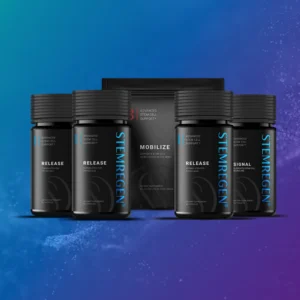
So I reached back out to the company and asked them to send me two months of the Accelerated Repair Protocol. So this is a little different, but I think it’s more relevant, especially for autism parents and for any parents who might be thinking about this for their child. We certainly carry a lot of stress as parents, and additional caregiving and things like this. And many of us end up in our own health crisis after helping our children for so long.
So I’m going to play with these products. I’m going to play with this protocol. I’m going to play with the products and really understand repairing our bodies from the parent perspective first. And then I’ll also do some deep dives into the stem cells and working with children with autism, and what’s the science going on there?
So at the same time, I’ll also be looking at the potential impact for parents who are considering stem cell transplants for their children with autism. If you’re considering that in the US, you typically have to go to another country. So you’re talking tens of thousands of dollars. So I’ll be thorough in my experimenting and in my learning, and I’ll keep sharing updates as I go along.
It is expensive, but I would say for training-wise as an athlete, and I’m not a professional athlete, but I saw a huge difference when I was training with this product line. So that definitely has me interested, and I’ll go through the science, and please stay tuned because there will be more posts coming.
Confused by all the information about autism? I’ve got you. Click the link to see how we can work together. Let me break down the science and provide you with clear, actionable steps to make your path forward easier.
